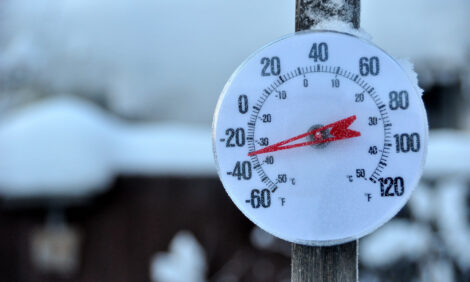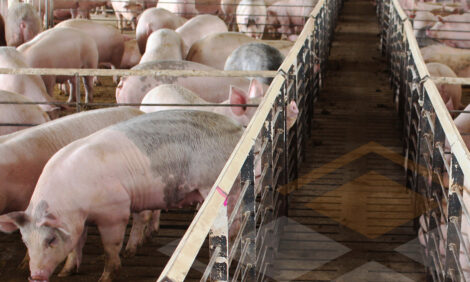



U.S. Hog Breeding Herd Structure 2004
By the National Agricultural Statistics Service, U.S.D.A - This report continues a periodic review of changes in the make up of the breeding herd and trends in its efficiency.Annual Pigs Per Breeding Animal Continues Steady Increase
The U.S. breeding herd efficiency continues to increase over time. The last review,
released in September 2002, reviewed the industry as of the 2001 production year. This report
compares the current evaluation to that time period.
The average number of pigs per year per breeding herd animal (includes sows, gilts, and boars)
was 16.9 in 2003, up from 16.2 in 2001. The steady increase in average pigs per breeding animal
was largely due to the increase in the number of litters per sow per year. This increase in
productivity continued to be a factor in the breeding herd decline of 3 percent since 2001. (Chart 1
and 2).
Operations with more than 5,000 head accounted for 79 percent of the pig crop in 2003 compared to
75 percent in 2001. Conversely, operations with less than 5,000 head, accounted for 25 percent of
the U.S. pig crop in 2001 but only 21 percent in 2003 (Chart 3). Meanwhile, the number of hog
operations with more than 5,000 head has increased from 2,200 in 2001 to 2,270 in 2003 (Chart 4).

The number of operations with less than 5,000 head has declined from 79,000 to 71,300 during the
same period (Chart 5). The majority of this decline was in operations with less than 500 head.
The litter rate for operations with less than 5,000 head averaged 8.48 pigs per litter in 2003,
virtually unchanged from 2001. (Chart 6). The litter rate for operations with more than 5,000 head
was 8.99 pigs in 2003 compared with 8.95 in 2001.

The number of pigs per breeding animal per year for operations with less than 5,000 head increased
from 15.08 pigs in 2001 to 15.62 in 2003, an increase of 0.54 pigs or 4 percent (Chart 7).
Operations with more than 5,000 head increased from 16.62 pigs to 17.24 pigs over the same
period, an increase of 0.62 pigs or 4 percent. The increase in pigs per breeding animal for
operations with less than 5,000 head is largely attributed to the steady loss of less efficient
operations with fewer than 1,000 head and an increase in the proportion of operations with 1,000 to
4,999 head.

Feeder pig imports have become more of a factor in the structure of the U.S. breeding herd. The
U.S. imported 4.8 million Canadian feeder pigs between December 2002 - November 2003, up 30
percent from the same period a year earlier and up 57 percent from two years ago. (Source: Foreign
Agricultural Service and Department of Commerce, U.S. Census Bureau). These imports account
for approximately 14 percent of Canada’s annual pig crop. (Source: Statistics Canada, Agricultural
Division). These feeders, if domestically produced, would require approximately 5 percent more
U.S. breeding inventory annually.
In conclusion, much of the increase in the efficiency of the U.S. hog breeding herd over the last 5 to
10 years can be attributed to the shift in size of operations from smaller, less efficient to larger,
more efficient operations. As a larger proportion of pig crop production is accounted for by
operations with 5,000 or more head, the average pigs per breeding animal will likely continue to
rise. However, at a point in the future where consolidation of inventory may slow, advancements in
technology and herd health will contribute more to the measurement of efficiency than the shift of
production to larger operations.




Further Information
To view the PDF version of this report (7 pages)
Click Here
Source: National Agricultural Statistics Service, USDA - September 2004






